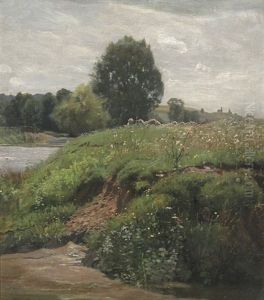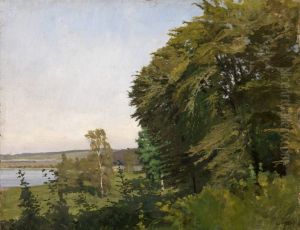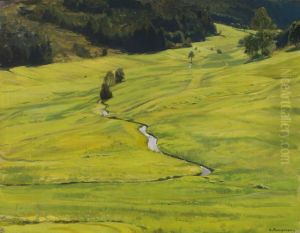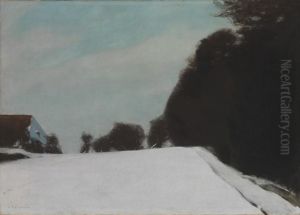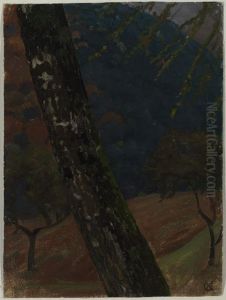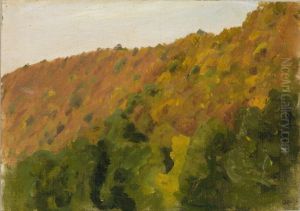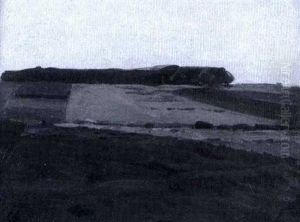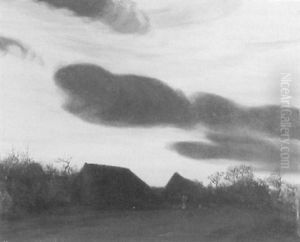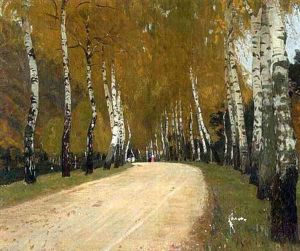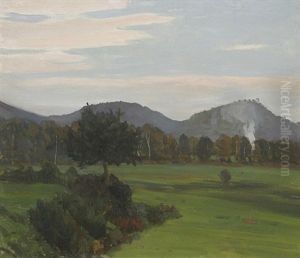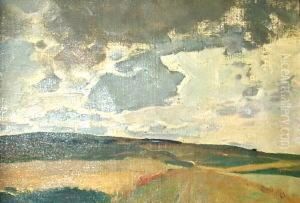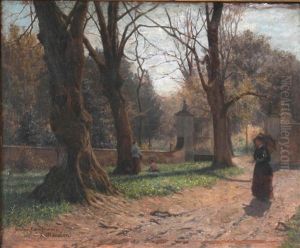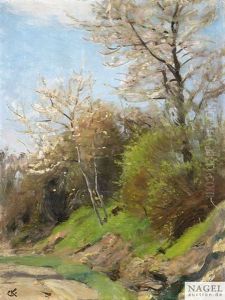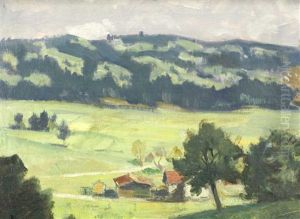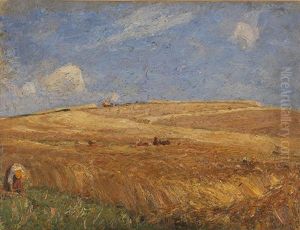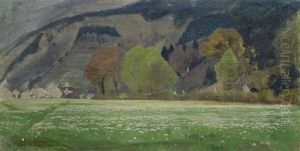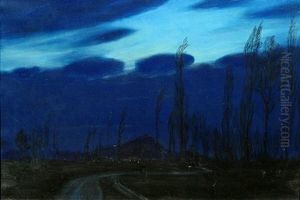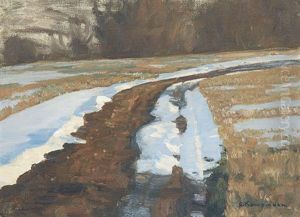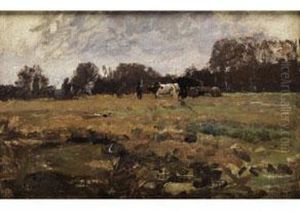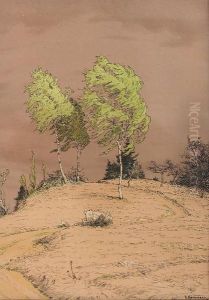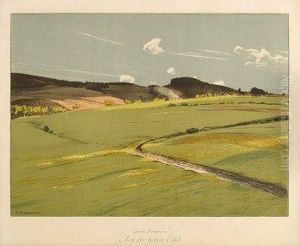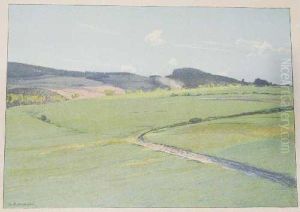Gustav Kampmann Paintings
Gustav Kampmann was a German painter and graphic artist born on May 11, 1859, in Düsseldorf, Germany. He is associated with the Düsseldorf school of painting, which was a group of painters who taught or studied at the Düsseldorf Academy in the 19th century. Kampmann's work was influenced by the natural beauty of the Rhine region, and he often depicted landscapes imbued with a romantic and atmospheric quality.
After studying at the Düsseldorf Art Academy, Kampmann became a member of the Düsseldorf Artists' Association 'Malkasten' (Paintbox), which was an important hub for artists at the time. He also spent time in Munich, which was another significant center for art in Germany during his lifetime. Kampmann's early work was marked by detailed realism, but as his style matured, he began to adopt more impressionistic techniques, using looser brushstrokes and a brighter palette.
Kampmann's landscapes were particularly notable for their innovative use of light and color. His canvases often captured the changing moods of nature, reflecting the influence of Impressionism, though he never abandoned the solid compositional structures typical of the Düsseldorf school. In addition to his landscapes, Kampmann painted still lifes and portraits, though the former were where he found most success and recognition.
During his career, Kampmann exhibited his work at various art shows, including the Great Berlin Art Exhibition and the Munich Glass Palace. His work was well-received, earning him accolades and a growing reputation as a skilled landscape painter. Despite this, he did not achieve the same level of fame as some of his contemporaries.
Gustav Kampmann's life was cut short due to illness, and he died on June 24, 1917, in Munich. His legacy, while not as widely known as some of his peers, is preserved in the collections of several German museums and in the art historical record as a talented painter of the Düsseldorf school who contributed to the development of landscape painting at the turn of the 20th century.
